Whether you want to start your own online business or add new revenue streams to your existing one, print on demand offers a low-cost, high-profit opportunity to sell a new array of products that your customers will love.
Selling physical products with your unique designs is a fun and lucrative way to share your creativity with a targeted community. But setting up a production system that includes sourcing blank products, transferring your designs, warehousing goods, and shipping worldwide is a pretty big commitment for a new business.
That’s where print on demand (POD) comes in.
It’s an easy way to sell custom products and you don’t have to do any of the manufacturing work.
What is print on demand?
Print on demand stores use a third-party company (a print on demand manufacturer, or printer) to customize white-labeled (brand-free) products. They send the print manufacturer their artwork digitally. Then, that art gets put on shirts, phone cases, water bottles, stickers, and more.
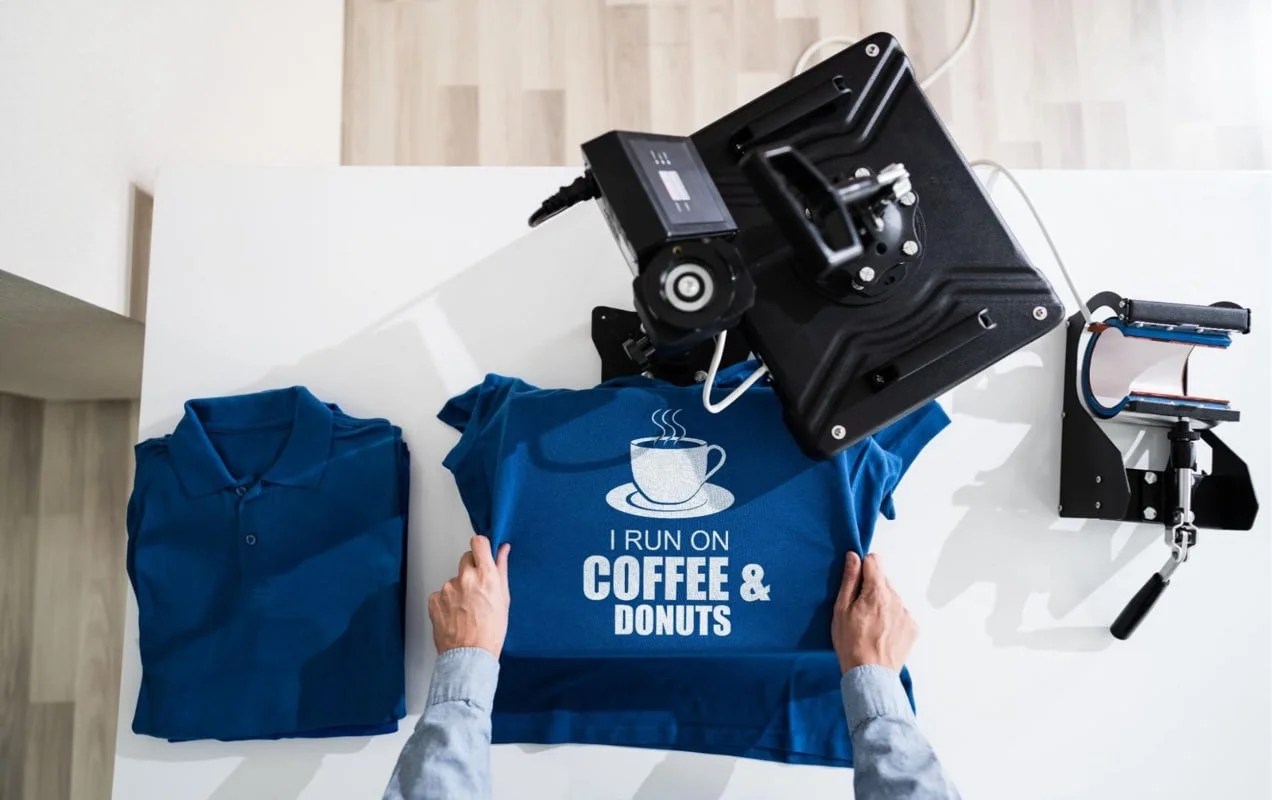
These manufacturers will also manage the delivery, packaging, shipping, and any additional costs. Most print providers will package your products with your branding on the packaging, too.
A print on demand store is essentially an intermediary, connecting the customer to the printing company. The manufacturer prints items as they are ordered, one at a time, so there’s no inventory.
Successful print on demand stores specialize in a niche. They develop unique designs that appeal to a specific audience and foster their brand as a thought leader in that space. If you have strong design skills and a passion for a specific topic, you can create a print on demand business with less risk than if you manufactured and stored inventory yourself.
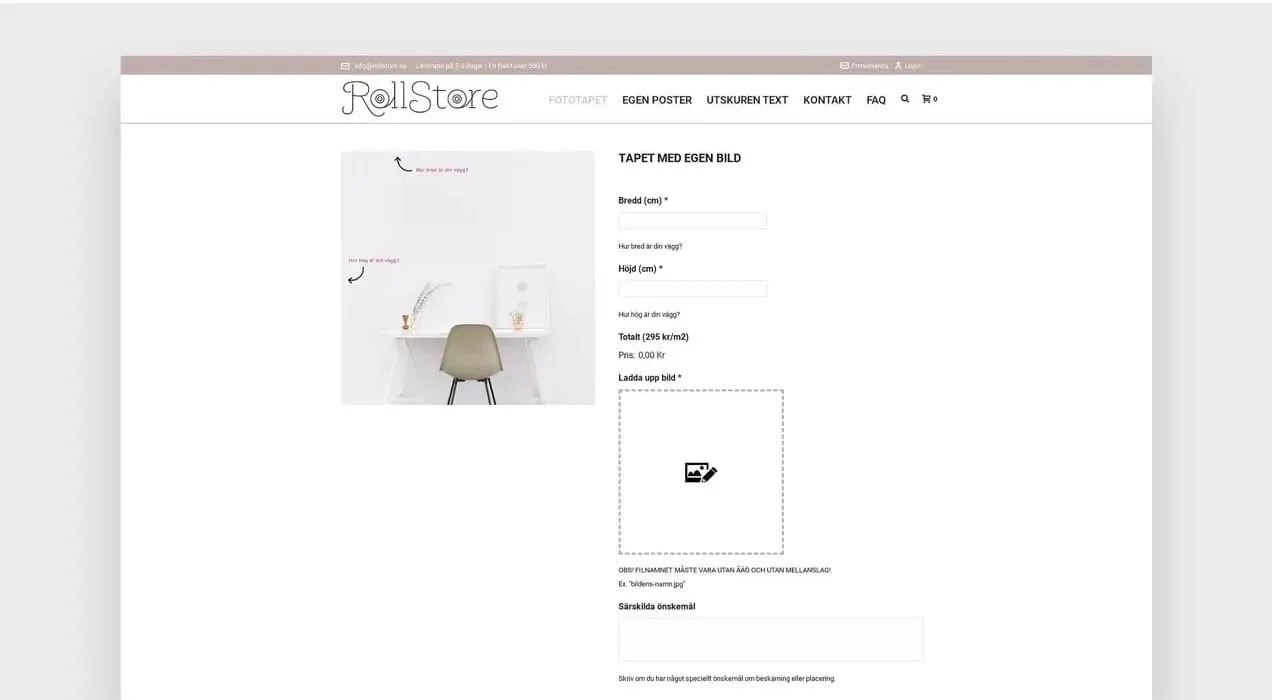
Photo © https://rollstore.se/
Ways to use print on demand to generate revenue
There are four ways to profit off a print on demand business model, and three of them require very little risk or investment on your part.
Create new revenue for an existing business
You may already own a business, or several. It could be online, offline, or both. By utilizing a print on demand strategy, you can bolster your revenue with a new line of custom products.
For example, suppose you have an online business selling cosmetics. You have a brand, a loyal customer base, and an array of products. Using print on demand, you could launch a line of t-shirts, hats, and various other types of apparel featuring your brand name or other types of artwork that would appeal to your customers.
You can then use these items as upsells, gift ideas, and bonuses for people who spend a certain amount of money, as well as part of their regular shopping experience.
Since these products are only manufactured as they’re needed, you don’t need this to generate a ton of momentum to be profitable. This might just be a small addition to your core business, but any increase is an increase.
Start a new print on demand business
With a new business, you’d be creating your own set of products. You could do this with your own unique designs and serve a particular niche, or you could even curate designs from a fellowship of artists and give them a cut of their sales. In this sense, you’d be creating a sort of marketplace.
When starting a new POD business, you’ll follow much of the same process as traditionally selling online. You’ll need to find an audience, create a plan, build a website, employ great marketing techniques (including building amazing product pages), and refine your business over time.
You’ll even need to go through the product development stage, except your product development will mostly be creating new designs and sourcing raw products those designs would work well on.
Sell print on demand services to other businesses
Many businesses like to create custom products. Some offer them to their employees. Others give them away to vendors and suppliers. And others like to offer them to their customers, just like the first and second examples on this list.
The B2B niche of print on demand is its own unique business, because companies will tend to order much larger quantities, and they have very different needs and expectations compared to individual customers.
You’ll need a fair amount of startup capital for this route, but you could decide to be a print on demand manufacturer yourself and take orders from online stores or companies that otherwise need customized merchandise.
T-shirts are perha[s the easiest products to manufacture through print on demand. You’ll need screen printing equipment (at the very least) and perhaps equipment to employ direct-to-garment printing and other methods. Plus, you’ll need to learn when and how to use each technique.
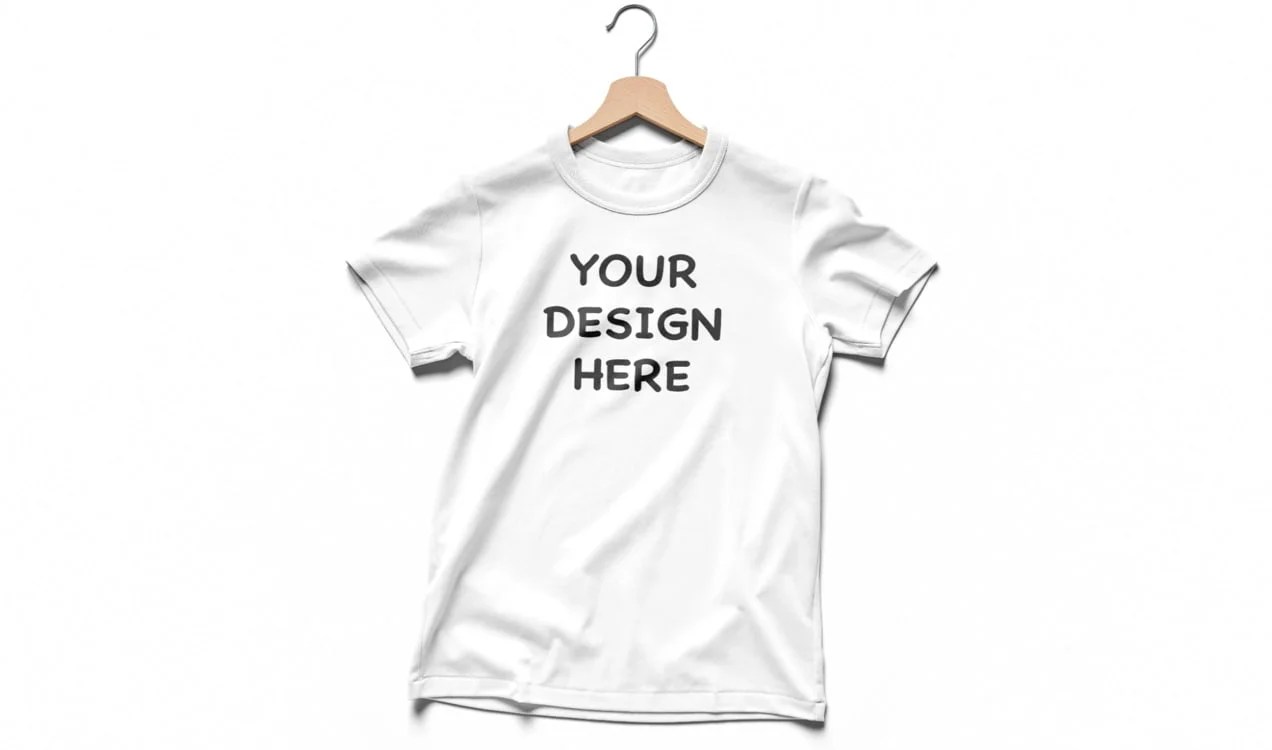
If you want to print on other materials, you’ll need things like laser printers.
Again, this is a labor and cost-intensive business to start, and probably not the best one if you’re just starting your first company.
Be the supplier of white labeled merchandise
This last option is the least feasible and the hardest to set up. Here, you would be competing against the other suppliers of blank merchandise. You would have inventory. You’d need a way to store, print, customize, and ship products requested from you by a print on demand service.
While it’s one of the most expensive of the business models, this angle does have more stability as it’s not as vulnerable to market trends.
Pros and cons of print on demand companies
Let’s get clear about a few things. So far it might seem like there are no downsides to adding print on demand to your business or maybe starting a new one. There are a couple things to be aware of in addition to the many points in favor.
Pros
Let’s start with the positives.
Little initial investment
You only sell something when someone orders it. And you aren’t managing any part of product production or the shipping process. You’re just facilitating the order.
That means there are few upfront costs standing in your way to using print on demand to generate revenue, other than just getting started and making it happen. You won’t need to get a business loan, or invest in a bunch of equipment, or design any physical products. Just create your online store, build a relationship with a printing company, and start selling.
No inventory management or storage and minimal labor
You’ll never have to own inventory or need a place to store it. That means, not only is there very little upfront investment required, but there’s no ongoing storage costs.
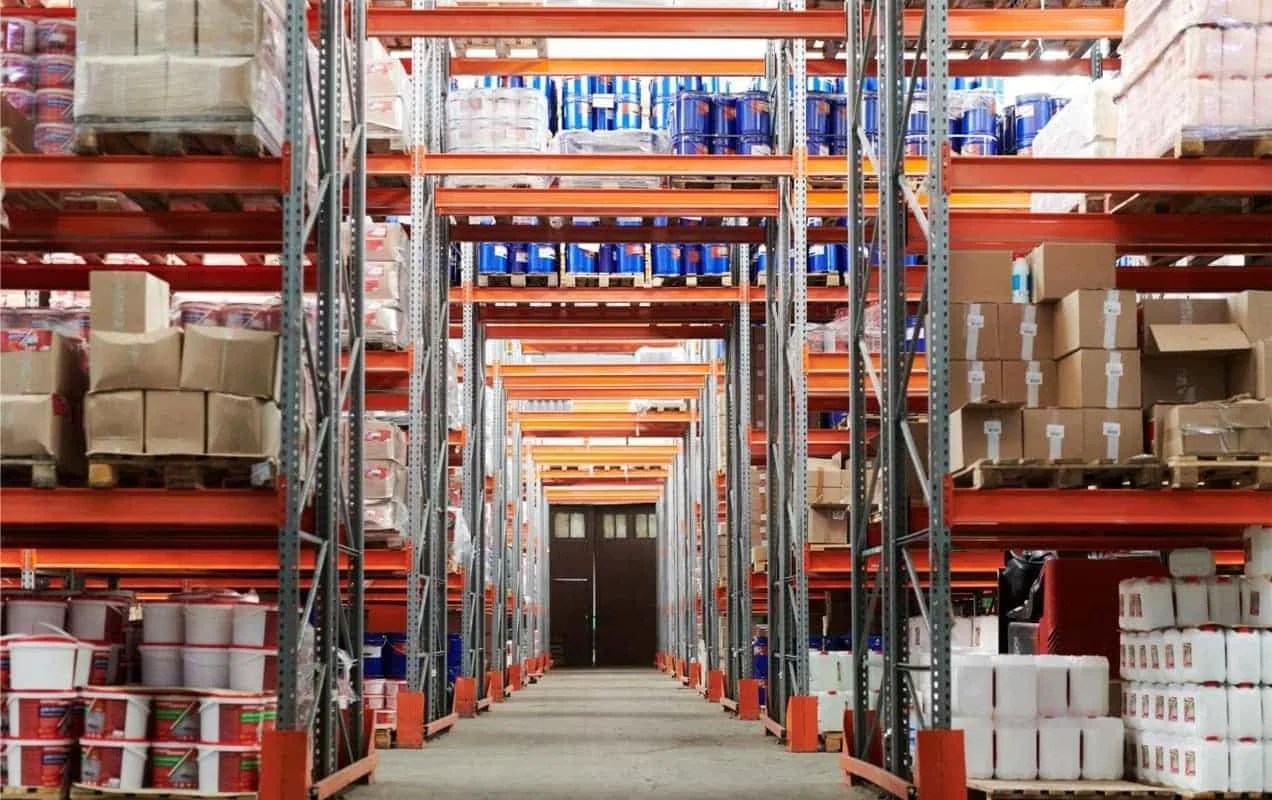
Scaling this business simply requires more and bigger orders. You won’t need many (or any) employees to manage things either. The entire process happens outside your office.
You will, of course, need to invest in labor to facilitate marketing strategies, provide customer service, and manage your online presence.
The ability to sell anywhere the supplier can ship
Most print providers can ship almost anywhere in the world. You aren’t limited to local shoppers, regions, or even countries. That means, within your niche, you can sell to anyone, anywhere.
Huge product variety
We’ll discuss this more in a bit, but there is a great variety of products you can sell using print on demand services. This is about far more than T-shirts and mugs — though that’s a pretty good place to start.
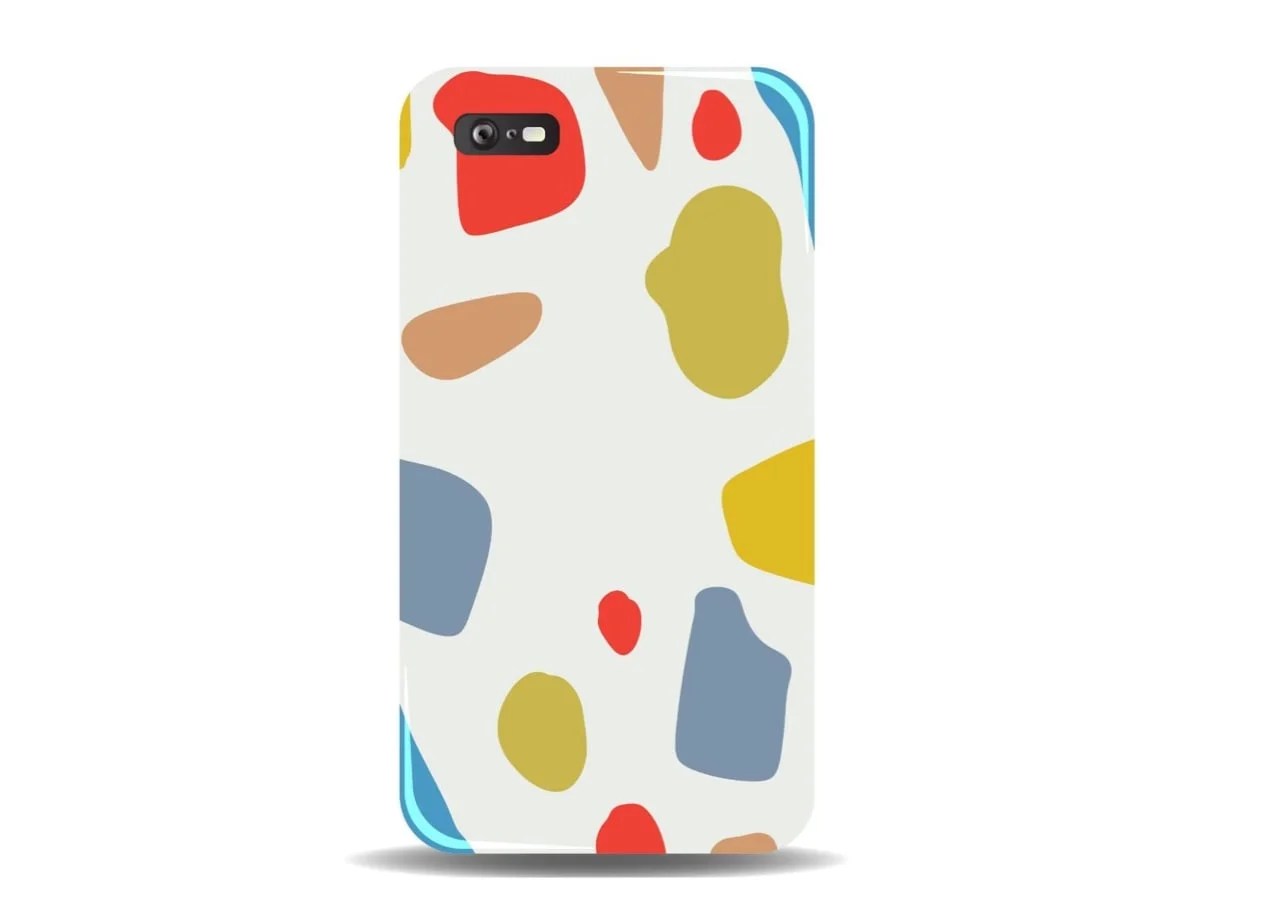
Cons
Yes, there are also a few drawbacks to print on demand businesses that you want to be aware of before you dive in. Here are the main ones:
Customer service is on you
The print provider may be doing the actual work of creating the products, but you are the one interacting with the customer. That means you do need to set up a customer service system.
If customers have questions, they’ll come to you. If they have complaints, they’ll come to you.
Any reviews they leave will be about you. This is not the kind of business you can just set up to run on autopilot. You will need to serve your customers, answer the phone, answer emails and texts, respond to live chat if you offer it, and take care of any problems that may arise.
Fulfillment delays
Because each product is customized, print on demand orders cannot be fulfilled the same day they’re placed. In a world where people are starting to, perhaps unreasonably, expect instant, same-day, and 1-day shipping options, this isn’t possible with print on demand.
Once the artwork has been submitted to the printing company by you or from the customer, the company has to complete the fulfillment process. Even just one item still takes time to produce.
While this doesn’t mean weeks, it also can’t happen in a day. So customers ordering print on demand merchandise need to be told that their orders won’t be fulfilled by tomorrow.
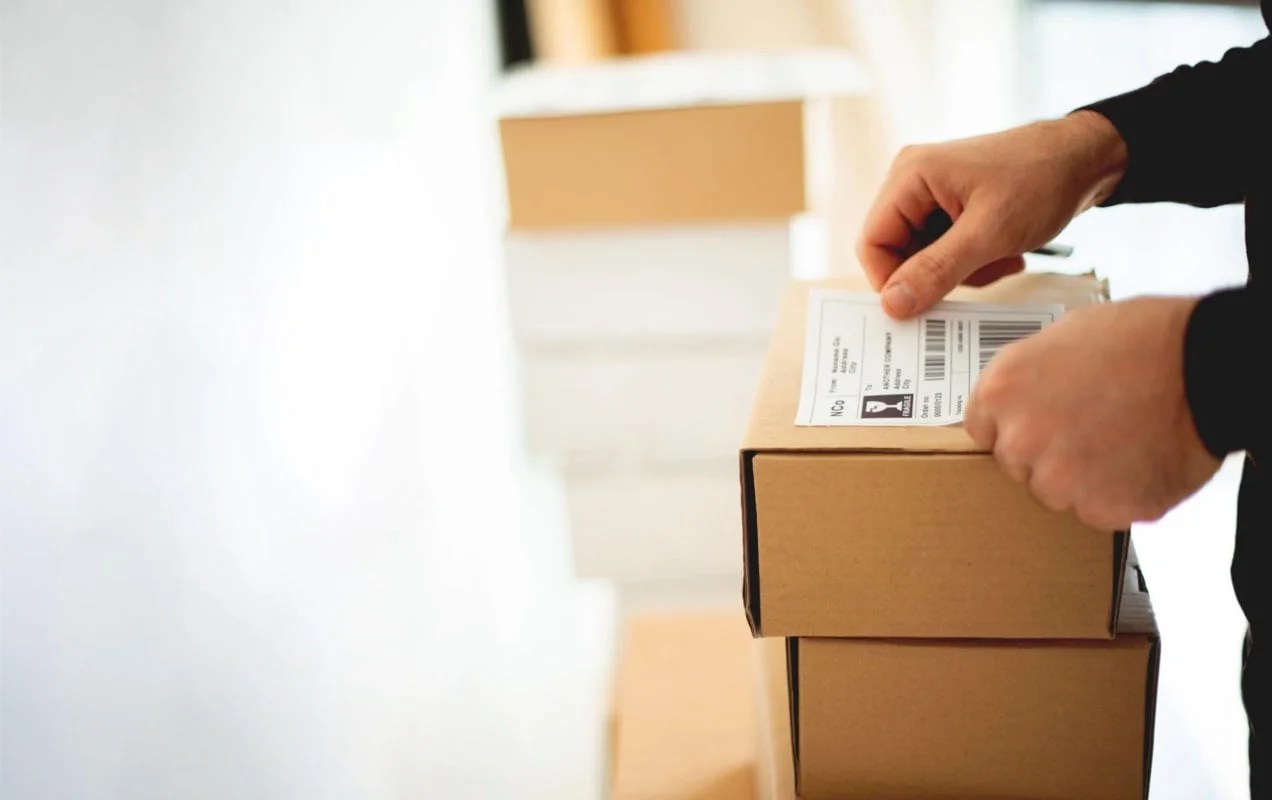
Increased responsibility and blame
If anything goes wrong with quality control, it will be your fault. At least, that’s how the customer will see it. If the merchandise gets delivered and the product quality is poor, even though that’s the print provider’s fault, the customer will put the blame on you.
That’s why you need to make sure you find a good company to work with to fulfill your orders. It’s your reputation, not theirs, that’s on the line — in the eyes of the customer.
Less control over the unboxing experience
While most print providers will use packaging that reflects your brand, they’re not as likely to create the kind of unboxing experience some companies are using to make the experience memorable enough to talk about on social media.
Types of print on demand products
First, let’s get the obvious stuff out of the way.
Clothes.
Of course you can do t-shirts. But you can also use print on demand for polo shirts, dress shirts, sweatshirts, short sleeve, long sleeve, tank tops, and basically any other top or shirt you can think of.
And you can do most other types of clothing too — pants, shorts, hats, socks, and more. And you can do all this in men’s, women’s, or unisex styles, as well as infants, toddlers, and kids.
Shoes are probably not going to happen, but you can get away with flip flops and things of that sort.
In addition to clothing, you can also use print on demand to create a huge range of custom products using:
- Mugs
- Phone covers
- Tote bags of many varieties
- Backpacks
- Posters
- Coasters
- Water bottles
- Rugs and mats
- Wall art
- Towels
- Pillows
- Ornaments
- Notepads and stationary
- Pens and pencils
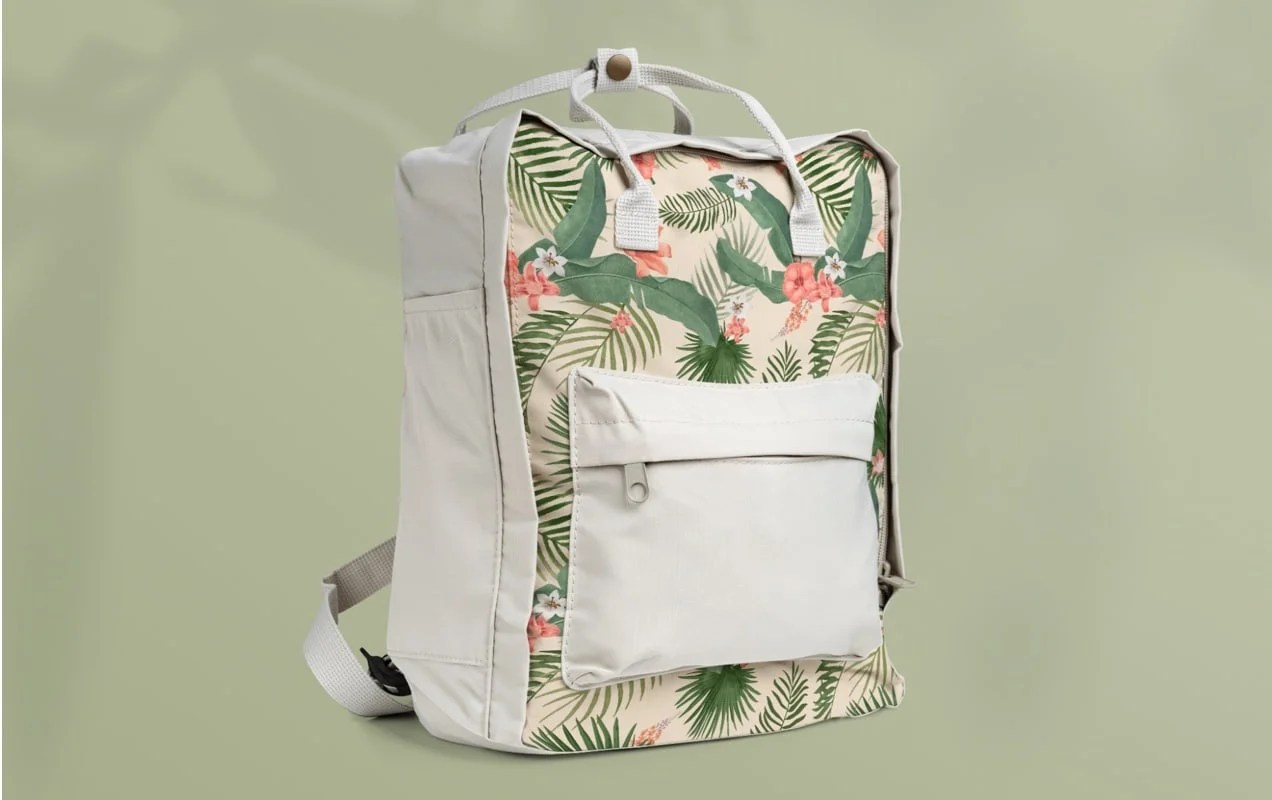
How to start a print on demand business
So, let’s get to the heart of it. If you want to create your own store using a print on demand model, here’s what you need to do.
And by the way, if you already have a business and want to add print on demand products to it, you can just skip the first two steps below, and the rest will still apply to you.
1. Choose your niche
Before you begin to build your shop, you need to make sure there’s a solid market and established demand for your product idea.
Start by defining your audience. The easiest target audience to focus on is one that matches a passion or ideal of your own. Are you interested in helping an endangered species? Discovering the world through photography? Celebrating your love of classic fairy tales? You’re probably not alone.
People with shared interests tend to find each other online, and if you sell products that cater to particular interests and follow search engine optimization best practices, your ideal customers will find your online store.
Some of the more popular niches for print on demand products include:
- Animals
- Social activism
- Humor and memes
- B2B
- Hobbies
- Holidays
But again, there’s an endless variety of genres and subgenres. If you want to make more money from your print on demand business, you should probably aim for a more popular niche. If you just want this as another source of income but are more excited about a niche that may be less popular but still has passionate fans like you, then pick whatever you want!
2. See what’s popular online
If you’d like to do a little research into this, spend some time looking at sites like Etsy, which sells tons of customized creations and products. You can also research using Google Trends, which gives data about the most popular internet searches related to products and industries.
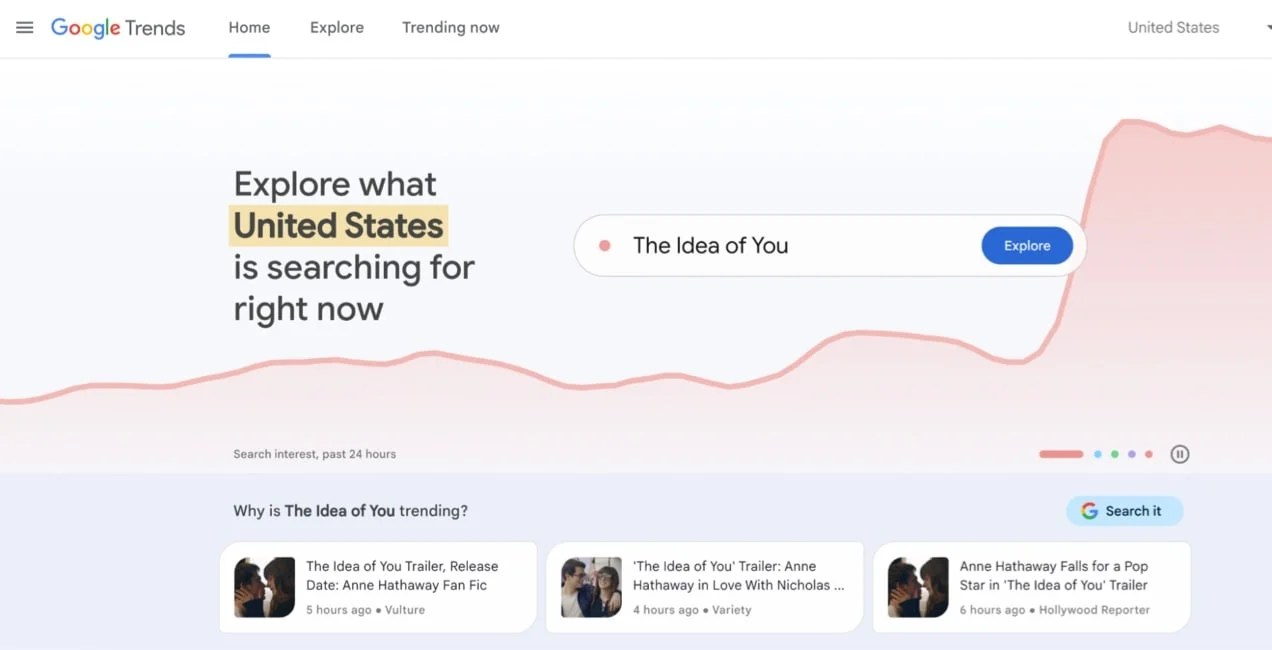
3. Determine what products to sell
Once you’ve settled on the target audience you want to focus on in terms of the type of artwork you will feature, the next task is to choose the products you want to sell. Clothing? Merchandise? Something else?
Use the list of products from earlier, decide which ones you want to start with, and get going. You can always add more later. Just make sure the printing company you decide to work with offers the products you want to sell.
4. Obtain artwork designs
For existing businesses wanting to add print on demand as another line of products, you may decide to use branded imagery like logos, taglines, certain products you sell, or various other graphics your audience will appreciate.
You can also allow customers to submit their own graphics and make truly custom merchandise. New and existing businesses could do this.
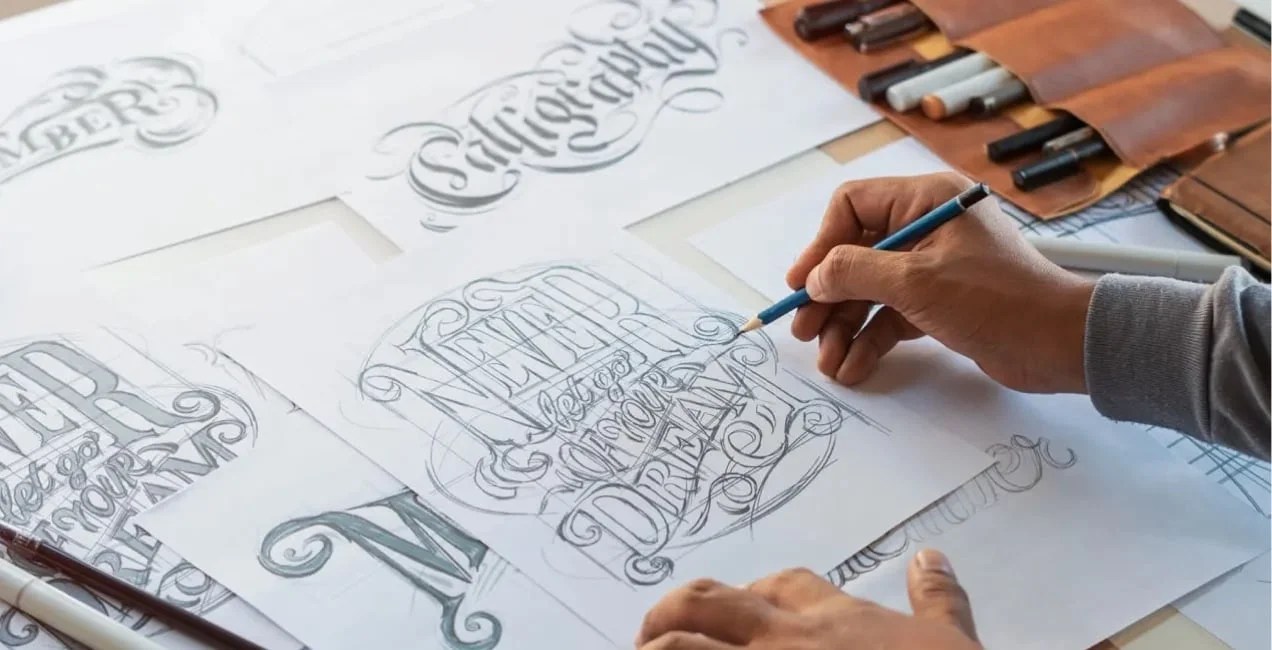
For new businesses, you’ll need to amass your own supply of artwork you can feature on your online store and sell. Where will you get these graphics? You have a few options.
First, you can hire it out. Use sites like Upwork and Fiverr to find a graphic designer and have them create the artwork you’ll sell. If you have no design skills or want more options than you’re capable of creating yourself, this is a great way to go.
Your second option, if you intend to continue creating new graphic designs, is to hire someone to do it in-house.
And your third option, if you have the skills or want to start learning them, is to do it yourself.
If you choose this option, graphic design is a skillset all its own. The less you know, the more you’ll need to learn.
Graphic design considerations
Here are a few graphic design tips to think about as you begin working on your designs.
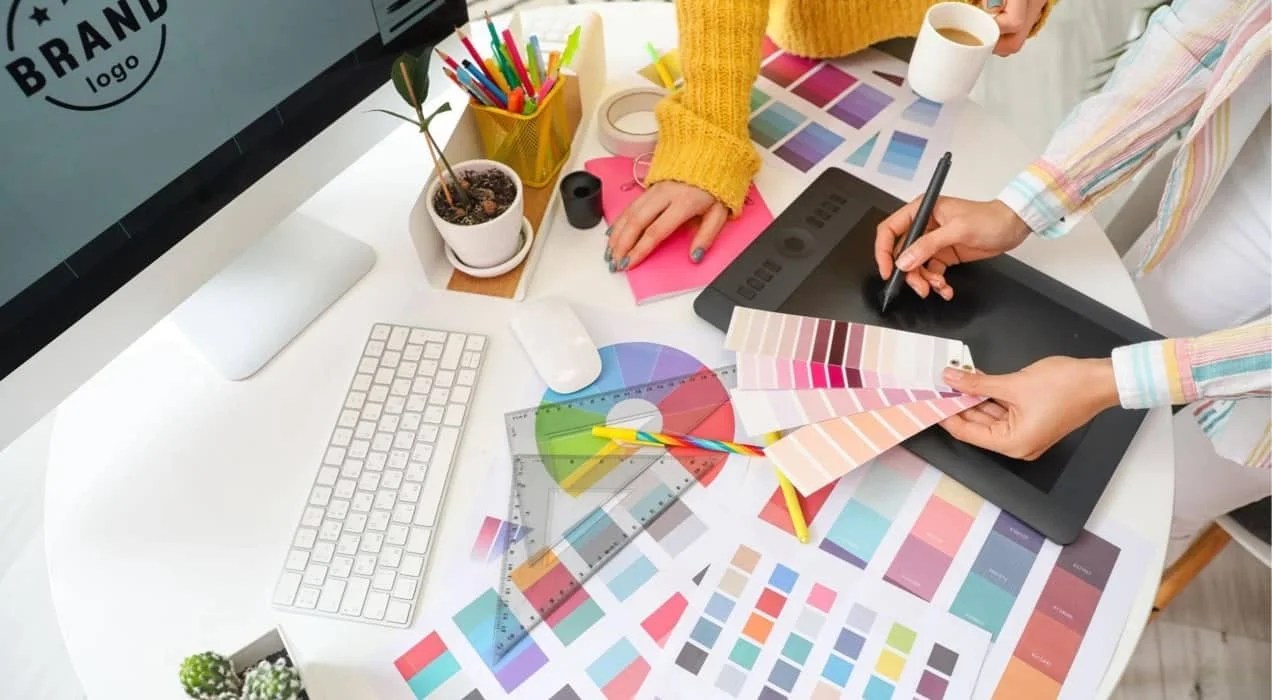
The overarching principle is that what you create needs to be easy to interpret. Confusing, cluttered, and busy designs that are hard to decipher don’t sell as well (unless that’s your niche). With that in mind, consider aspects of design such as these:
- Colors. You need the right mix of complementary colors (not too many!). It also has to look good on the color of the product it will be printed on.
- Fonts. You want any words that you use to be easy to read, so choose a font that isn’t too busy. You’ll also need to consider font size based on the product that the design is going on. For example, you might want the font to be smaller on a phone case than on a T-shirt.
- Accessibility. As always, make sure that your design is accessible to those with vision impairments. This means taking into consideration things like color contrast and visibility.
- Spacing. Use an appropriate amount of “white space”, which is the blank space around graphic elements. This helps them stand out and be easier to consume.
- Printing requirements. The print on demand supplier that you’re working with will likely have certain requirements for each product. Most have templates that you can download and work with, but make sure that you’re following their requirements for document bleed, color mode, size, etc.
- Hierarchy. If you have a design with multiple elements, think through the ones that you want to place emphasis on. Which ones are most important? Then, you can set those apart using spacing, size, color, bold fonts, etc.
Pro tip: Many printers, at least for specific kinds of products, have lower fees for designs that are only one or two colors. If you can create an effective design that uses fewer colors, you can enjoy higher margins.
You’ll need to invest (both financially and with your time) in design software. Canva, Pixlr, and Photoshop are common options.
Photoshop is the most advanced of those three, but has a much greater learning curve.
Once you’ve created your designs, you’ll need to create mockups. Some print on demand manufacturers will mock up your designs on their products automatically. This is helpful, but you may still want to create your own or modify the mockups to place them in different scenarios (various backgrounds and use cases) for marketing materials. This is also helpful to test how your design looks across different applications.
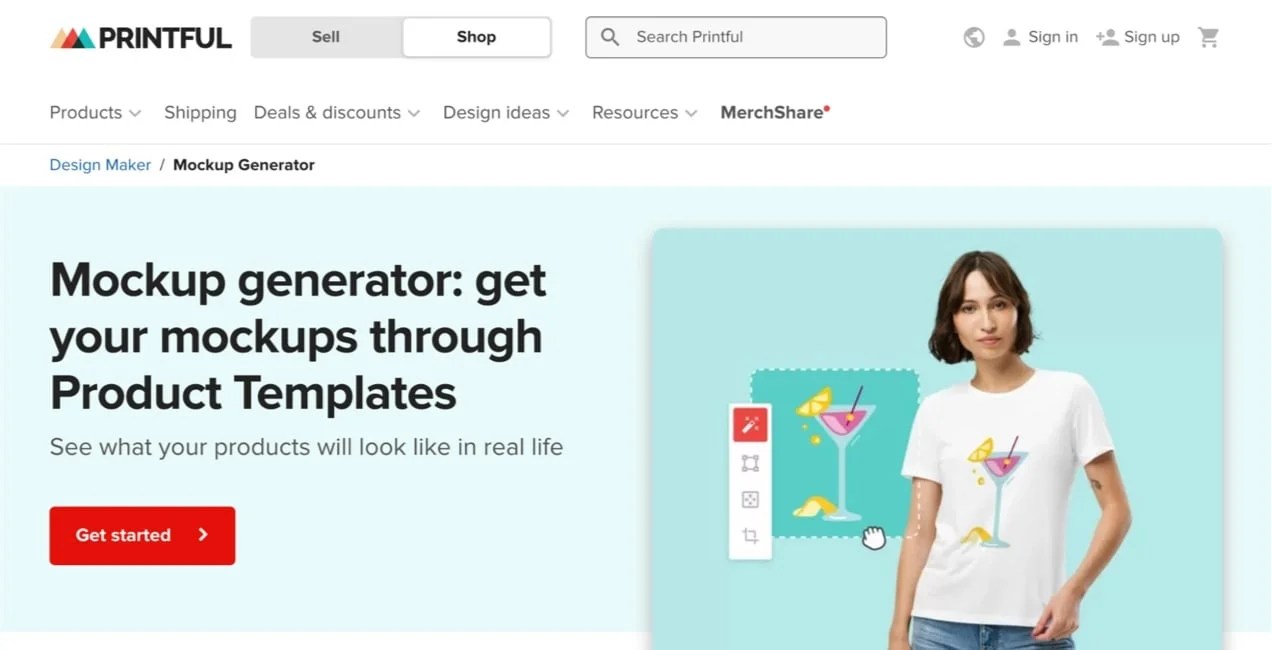
You can also hire freelancers to help you with mockups if Photoshop is not your thing.
One last design consideration
If you aren’t featuring your own creative designs, artwork, or photos on your products, then it’s critical to make sure your artwork conforms to all copyrights and trademarks.
Fan art based on licensed characters, text from books, copyrighted quotes, and photos downloaded from the internet are just a few examples of work that cannot be sold for profit without a license from the owner. Graphics you buy from stock photo sites may not be legal for resale, either, if you don’t get the right license.
Please take time to research intellectual property laws and consult a legal professional.
5. Set up an online store
If you have an existing business, you probably already have your own online store. In that case, you’ll just need to add print on demand products or services to your existing store. If you’re starting a new business, you’ll start from scratch.
WooCommerce is an online ecommerce platform that makes it quicker to set up your print on demand business. Woo provides a flexible, scalable, global solution that integrates seamlessly with fulfillment partners. Plus, with your own website, you have complete ownership and control of your online storefront. To get going fast, read more about how to build an online store.
WooCommerce provides all the functionality you need for product pages, the checkout process, marketing, SKU and product management, taxes and financial compliance, and the other systems you’ll need to run an online business.
Take product images
To create a successful online store, you’ll need high-quality pictures of your products.
Your fulfillment partner may have blank images of their goods that you can use as a starting point for mockups. If you have some graphic design skills, you can place your artwork into these images, or hire someone to take care of this for you.
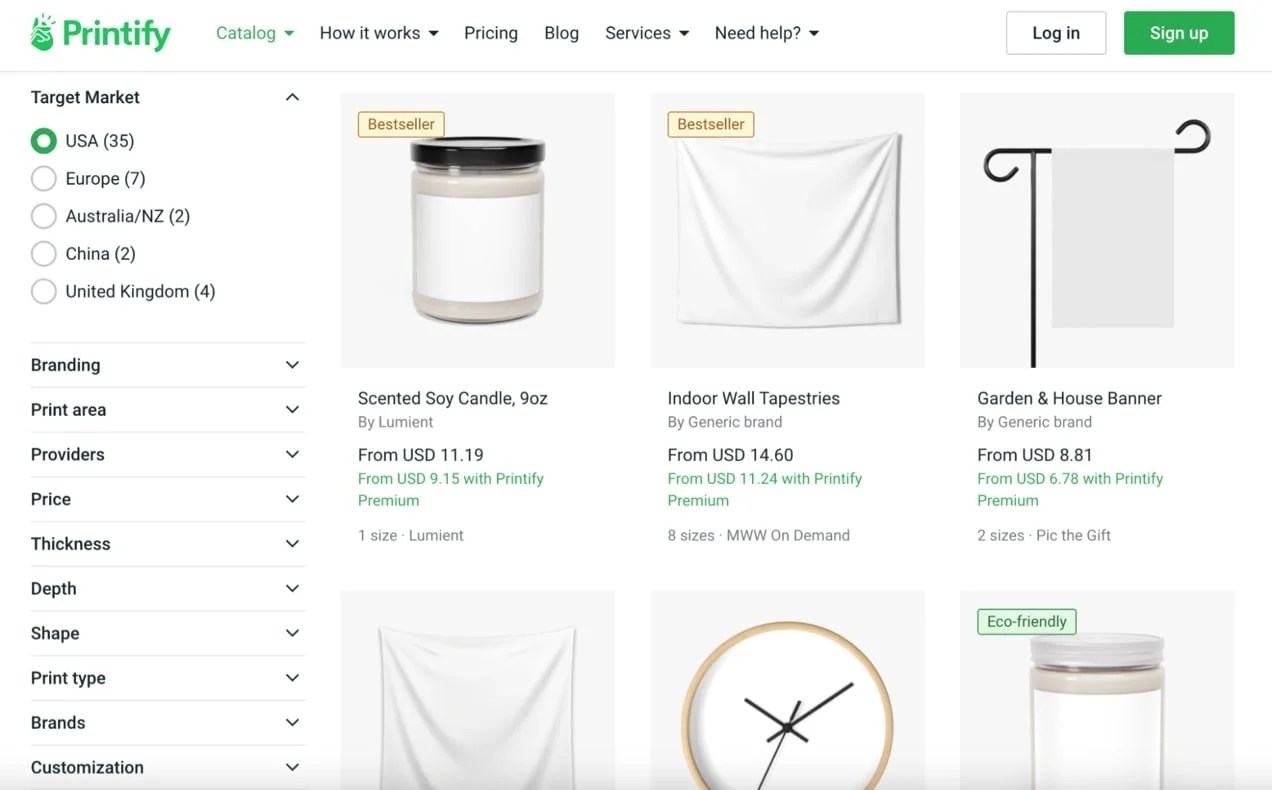
And even better, many print manufacturers will mock up your custom designs on their products automatically. However, these are fairly limited so the background or use case featured may not appeal to your niche.
Another great option is to actually order a set of product samples from your partner. This will allow you to test their quality, shipping process, and turnaround time. If all goes well, you’ll have products you can actually photograph in settings that fit your target market best. As a bonus, your own photos are almost guaranteed to be copyright-free and safe to use on your website.
Someday, you may decide to get photos of actual people wearing products you have created. You can also just present graphics of your various designs and then show the blank products customers can buy with them. However, this will be far less effective.

If your customers are allowed to submit their own customized artwork, then you’ll want to feature the blank products more prominently.
Where should you sell online?
In addition to having your own WooCommerce store, you can also sell print on demand products on marketplaces such as Etsy, eBay, Amazon, and Walmart. But unlike using WooCommerce, with these you don’t own the store itself, and are subject to their terms, conditions, algorithms, pricing requirements, and various other things that will be outside of your control. Here’s a comparison of the top marketplaces.
And this isn’t to say you still shouldn’t use these platforms. But if you like the increased reach available through these websites, we generally recommend using Woo and online marketplaces, not just the marketplaces. You want at least one platform where you control and own everything.
6. Find a good supplier
Once you know what you want to make, it’s time to find a fulfillment partner. Choose one that provides:
- The products you want to sell
- The right printing options to realize your vision — some methods might have limitations when it comes to colors or styles
- Pricing that allows you to turn a profit
- Shipping rates that are reasonable
- Fast fulfillment and turnaround time, and deliveries completed on schedule
- Worldwide reach (if this is important to you)
- An eco-friendly approach to printing and shipping
- Quality customer care, for you and your clientele
Quality doesn’t just refer to the merchandise itself, but the print quality, too. And some print providers will offer more options, such as sublimation printing. This is a type of printing that lets you print designs over the entire item, not just a pre-set area.
Decide which criteria are most important to you and choose a print provider that shares your values and needs. Make sure you look for reviews online to find a partner you’ll be happy with.
Here are some fulfillment partners that will integrate with your WooCommerce print on demand store:
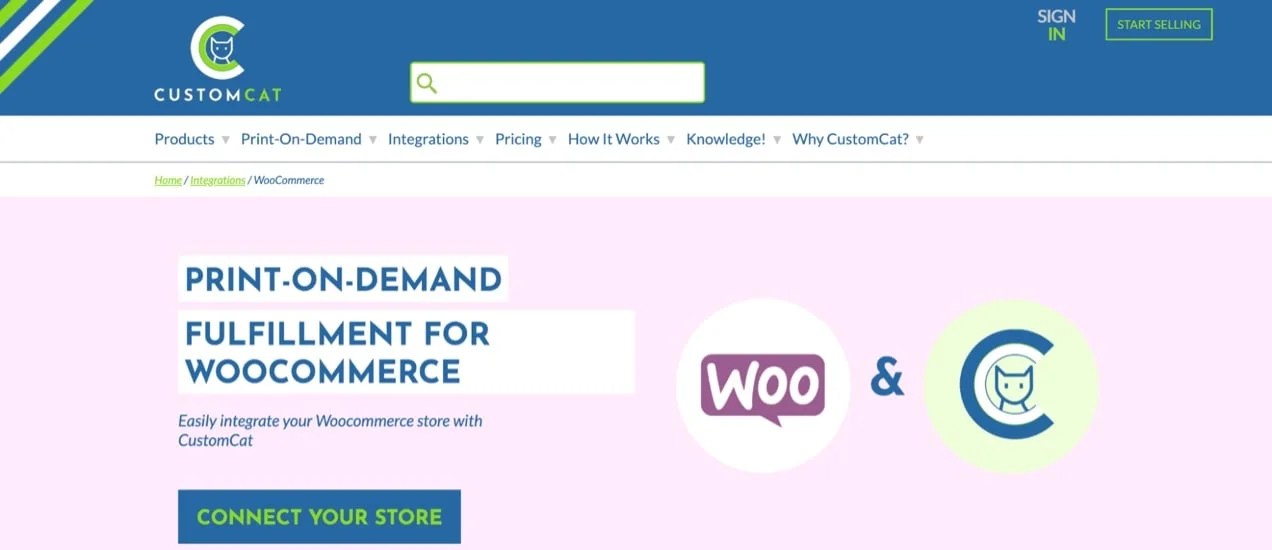
If there isn’t an existing free plugin or extension for your preferred fulfillment partner, you can use WooCommerce Advanced Notifications to keep everyone in the loop. With this tool, you can notify the right staff and suppliers for each product about new orders, low inventory, and back order requests.
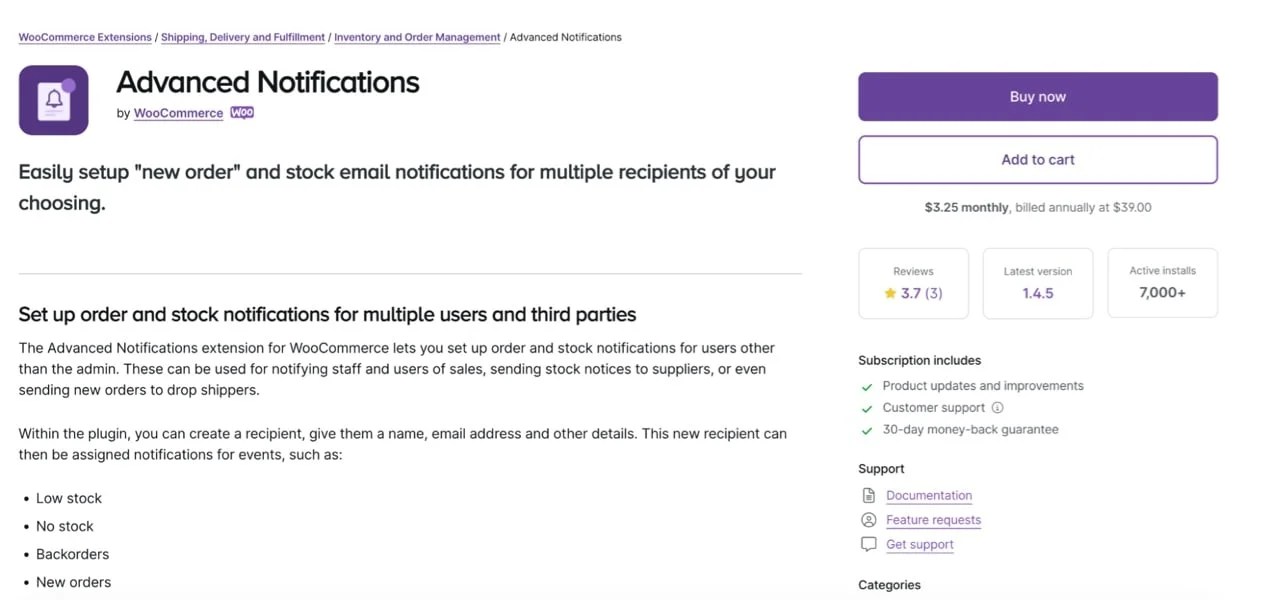
7. Determine your pricing
Next, you’ll need to decide what you want to charge. As mentioned earlier, one of the best things about print on demand is that your expenses are very simple to predict. That means predictable profit margins.
The print provider will have a retail price for their white labeled merchandise, and probably a charge for them to properly set up and print your artwork on their products. Along with shipping prices, that’s it!
So, you will know your cost per item.
All you have to do is decide the amount of profit you want to make for each item, and balance that against what you think customers will pay. The important thing here is, don’t decide in advance that “customers won’t pay this much” for your products.
When it comes to custom products, people will pay more. For certain things like fan art, creative humor, or causes they care about, they’ll pay more, because there is an emotional component to this purchase that far outweighs the cost.
For a simple example, imagine Darth Vader on a mug with the caption, “The caffeine is strong with you.”
People will pay way more for that than they will for a typical mug. The product has unique value to them. Don’t undervalue your print on demand products. And the great thing with online stores is that you can always adjust your prices later.
8. Start marketing and measuring results
And that’s why the last thing to do is marketing and measuring your results. This is an entire topic all of its own.
Once you’ve created your initial brand and products, you’ll spend the majority of the rest of your time as a store owner on marketing activities. Marketing is an ongoing process, not a checklist you can make it through and move on.
We’ve written a lot about marketing topics. You’ll want to start with an understanding of search engine optimization and dive into even more advanced SEO techniques from there. Learn the basics of social media marketing, paid search advertising, email marketing, and influencer marketing.
What’s selling the most? What’s not selling? Is it your pricing? The artwork? The product itself? Do you offer the right shipping options?
Are you appealing to the right target audience? Is the word getting out? Does your email audience know about your print on demand products? Can you bundle these with other products or make them a bonus gift with certain purchases?
Start selling your own designs with print on demand
Print on demand is an excellent opportunity for creatives to sell their designs on nearly any product imaginable — notebooks, T-shirts, stickers, phone cases, and more — without having to worry about investing a lot of money with inventory, trying to wrangle shipping costs, or managing fulfillment.
To be successful, take the time to get to know your audience, sell products that solve their problems, and find the right fulfillment partner for your store. WooCommerce provides everything you need to create a beautiful, effective print on demand shop that integrates seamlessly with your fulfillment partner.
